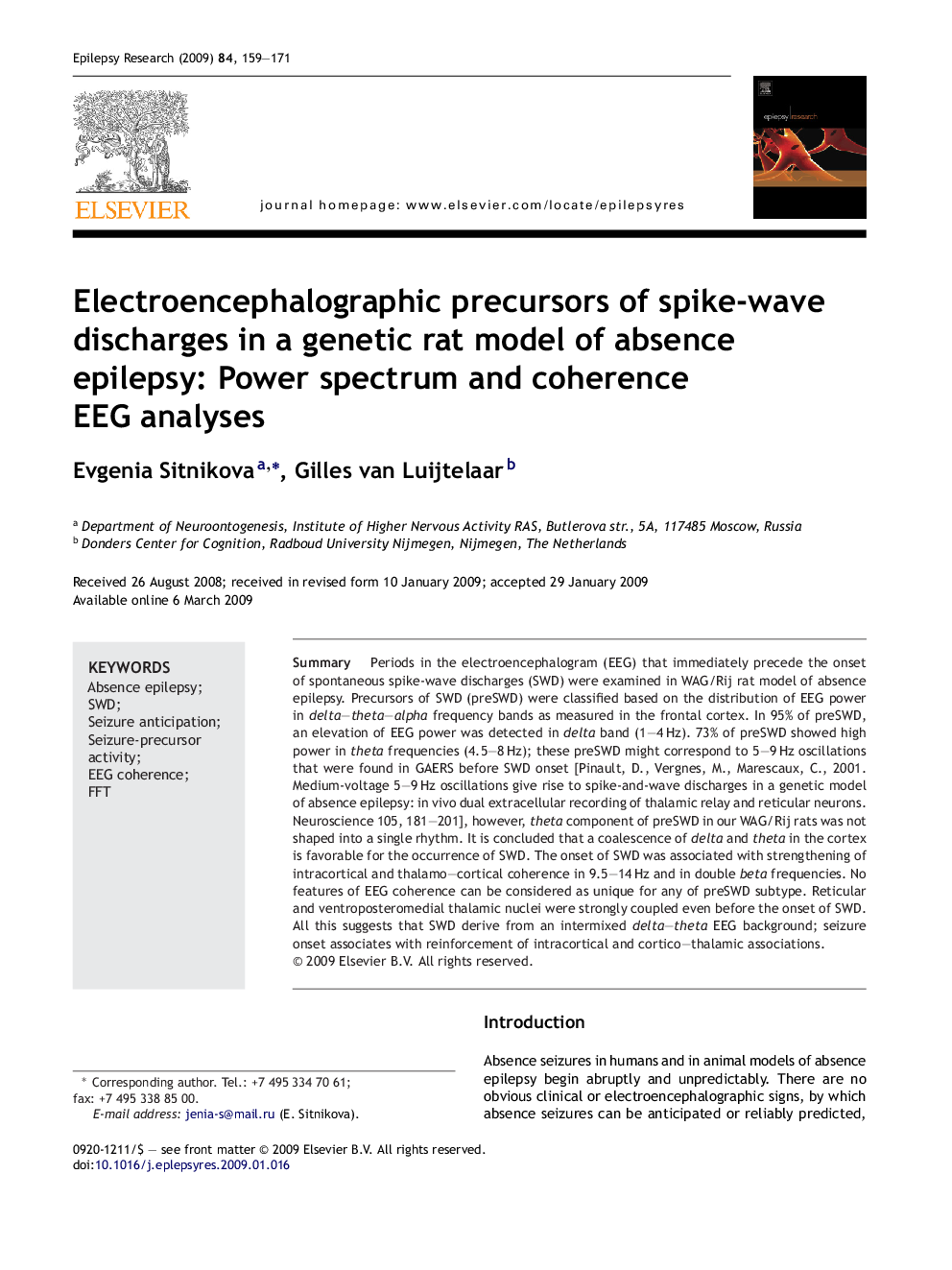| Article ID | Journal | Published Year | Pages | File Type |
|---|---|---|---|---|
| 3052816 | Epilepsy Research | 2009 | 13 Pages |
SummaryPeriods in the electroencephalogram (EEG) that immediately precede the onset of spontaneous spike-wave discharges (SWD) were examined in WAG/Rij rat model of absence epilepsy. Precursors of SWD (preSWD) were classified based on the distribution of EEG power in delta–theta–alpha frequency bands as measured in the frontal cortex. In 95% of preSWD, an elevation of EEG power was detected in delta band (1–4 Hz). 73% of preSWD showed high power in theta frequencies (4.5–8 Hz); these preSWD might correspond to 5–9 Hz oscillations that were found in GAERS before SWD onset [Pinault, D., Vergnes, M., Marescaux, C., 2001. Medium-voltage 5–9 Hz oscillations give rise to spike-and-wave discharges in a genetic model of absence epilepsy: in vivo dual extracellular recording of thalamic relay and reticular neurons. Neuroscience 105, 181–201], however, theta component of preSWD in our WAG/Rij rats was not shaped into a single rhythm. It is concluded that a coalescence of delta and theta in the cortex is favorable for the occurrence of SWD. The onset of SWD was associated with strengthening of intracortical and thalamo–cortical coherence in 9.5–14 Hz and in double beta frequencies. No features of EEG coherence can be considered as unique for any of preSWD subtype. Reticular and ventroposteromedial thalamic nuclei were strongly coupled even before the onset of SWD. All this suggests that SWD derive from an intermixed delta–theta EEG background; seizure onset associates with reinforcement of intracortical and cortico–thalamic associations.
